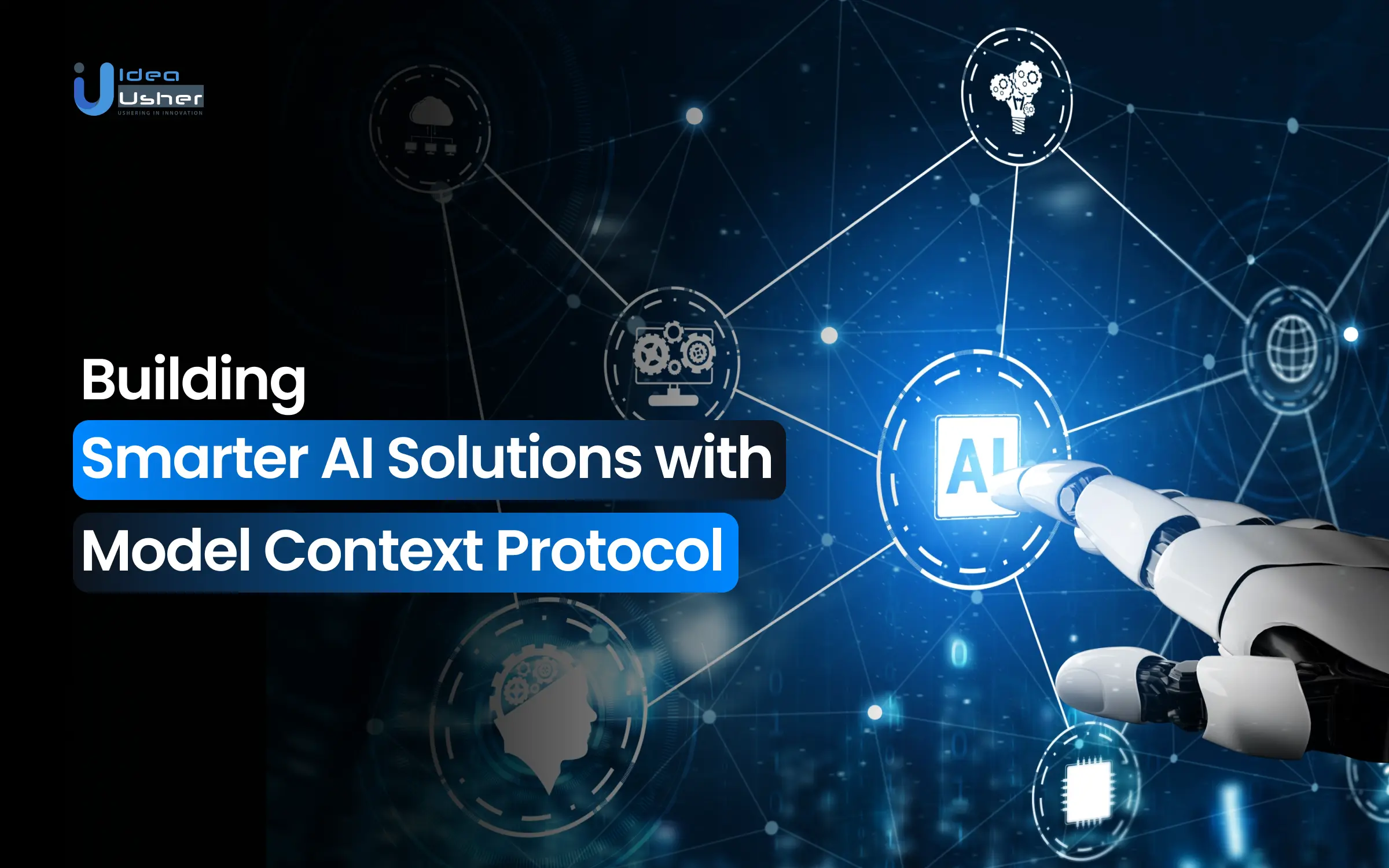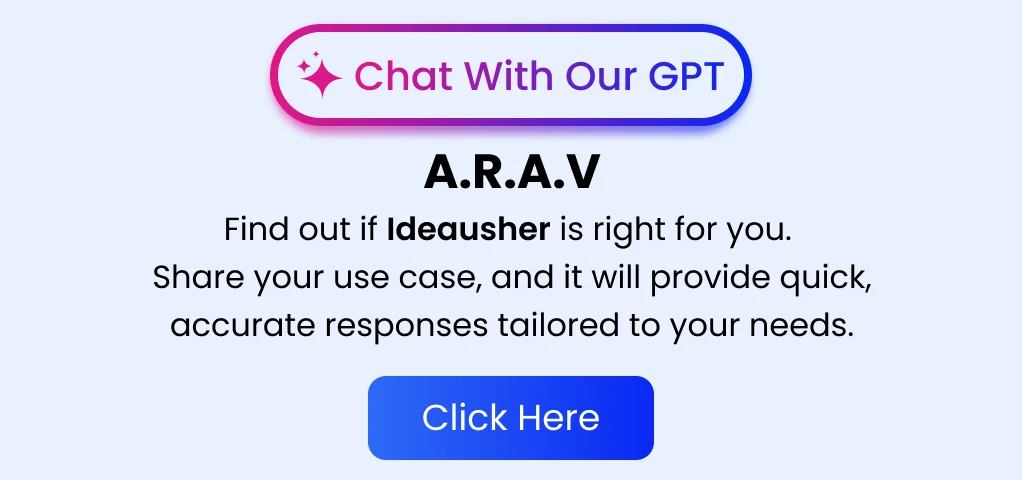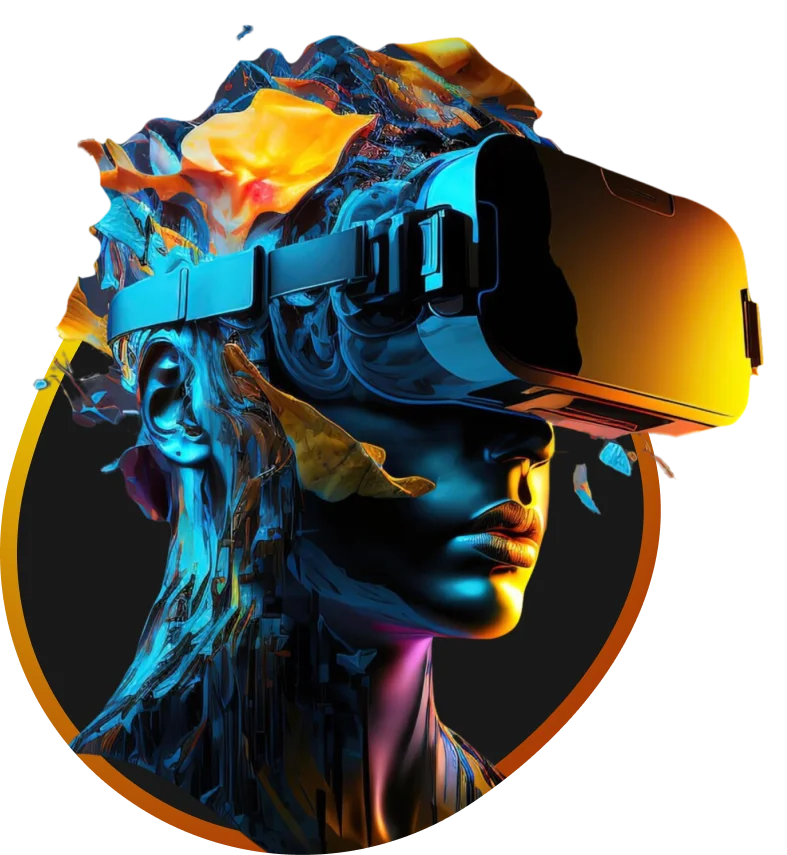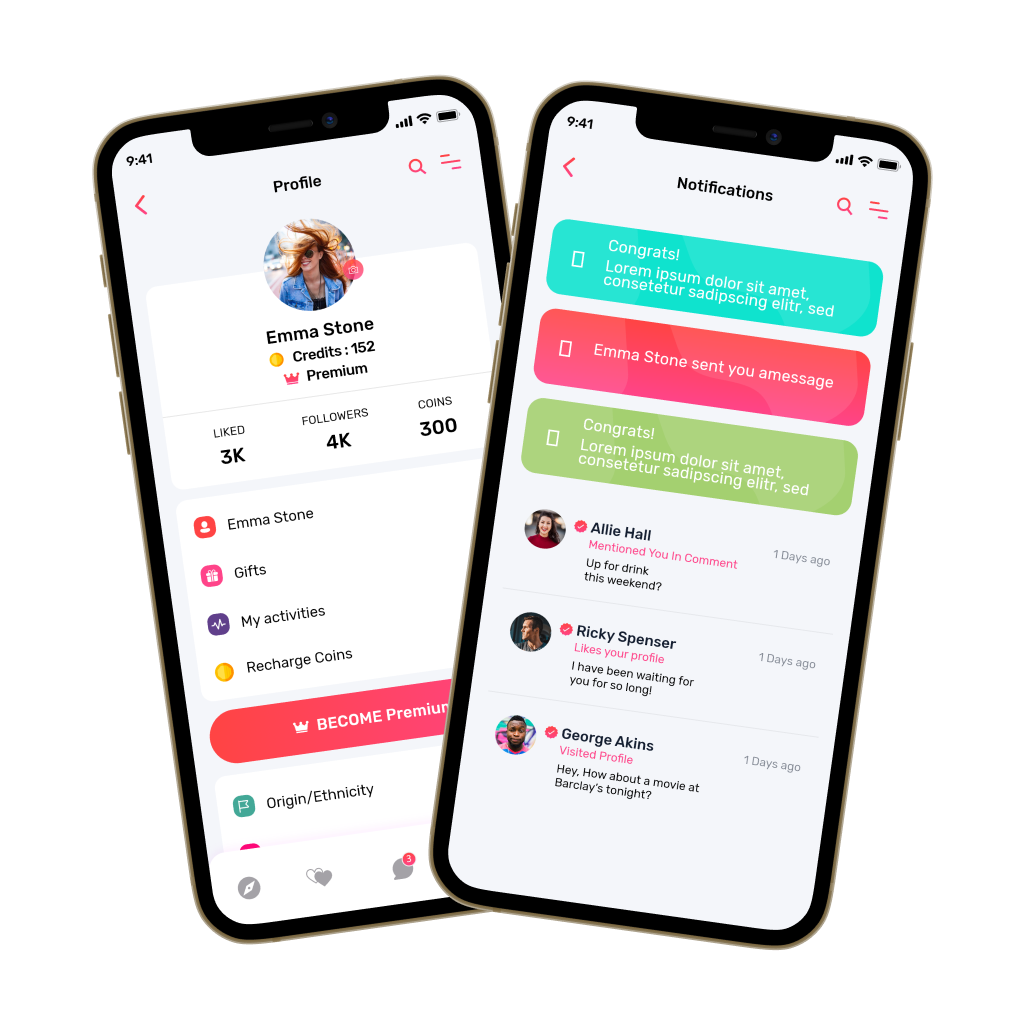Artificial intelligence has come a long way in helping businesses automate tasks, analyze data, and interact with customers. AI solutions with model context protocol provide a viable way to address these issues. But despite its impressive capabilities, many AI systems still struggle with one crucial aspect: understanding context. Whether it is a chatbot forgetting previous interactions or a model offering generic responses, the lack of contextual awareness often leads to limited effectiveness.
To build truly intelligent solutions, AI needs to do more than process information. It must interpret meaning, recall relevant history, and adapt to the evolving needs of users and environments. This is where the Model Context Protocol (MCP) comes into play. MCP provides a framework that enables AI to retain and apply contextual knowledge, resulting in smarter, more personalized, and more reliable systems.
In this blog, we will explore what an MCP is, why it matters, and how it can be implemented to create AI solutions that think more like humans. If someone wants to build a smarter AI solution with MCP, understanding it could be the next step in transforming your business with context-aware intelligence.
What is the Model Context Protocol (MCP)?
As the business world continues to evolve through digital transformation, artificial intelligence is emerging as a central force behind operational efficiency, enhanced customer engagement, and informed decision-making. Despite its growing capabilities, a significant challenge persists for many organizations: designing AI systems that are not only intelligent but also contextually aware and responsive to real-time variables. The Model Context Protocol (MCP) addresses this challenge by introducing a transformative approach to AI development.
Model Context Protocol refers to a structured framework that enables AI models to retain, process, and apply contextual knowledge in a dynamic manner. Unlike traditional AI models that rely on static training data and predefined outputs, MCP allows systems to understand their environment and evolve based on new information. This marks a significant step toward creating AI applications that are responsive, intuitive, and highly adaptable.
Traditional AI Models Vs. MCP-Enabled Systems
Conventional AI systems typically operate on fixed data inputs. Once trained, these models are rarely updated unless re-engineered or retrained with new datasets. While they may perform effectively in narrow or controlled settings, they often struggle in real-world environments where variables constantly change. This rigidity can lead to outdated insights, irrelevant responses, or even hallucinations where the AI generates inaccurate or fabricated information.
In contrast, MCP introduces the principles of adaptive learning. By continuously interpreting incoming data and maintaining a memory of past interactions, MCP-based AI models become more intelligent over time. They are better equipped to handle ambiguity, recognize context, and adjust outputs accordingly, resulting in a much more reliable and scalable solution.
Core Components of MCP: Building the Foundation for Smarter AI
The Model Context Protocol provides a structured method for creating AI systems that are contextually aware, responsive, and adaptive. These elements collaborate to produce intelligent outcomes in various fields, such as healthcare and finance. For business leaders, grasping these components is crucial for appreciating the benefits of investing in advanced AI infrastructure. At IdeaUsher, we focus on integrating these elements to offer scalable, business-oriented solutions.
1. Context Embedding
Context embedding enables AI systems to interpret situational signals such as user intent, behavioral history, environmental inputs, and previous interactions. This foundational layer allows the system to move beyond surface-level processing and generate insights that are relevant and timely.
Business Value: Context-aware applications improve personalization, reduce errors, and support more meaningful customer engagement. This is especially valuable in industries such as e-commerce, customer support, and digital health, where user context drives interaction quality.
2. Dynamic Memory Networks
Dynamic memory networks replicate a key aspect of human cognition: the ability to retain relevant information over time. These networks allow AI to maintain continuity across sessions, remember critical details, and apply previously acquired knowledge in new situations.
Business Value: This capability significantly enhances user experience by eliminating repetition, reducing cognitive friction, and enabling long-term personalization. It is ideal for customer relationship management tools, enterprise automation systems, and virtual assistants.
3. Adaptive Reasoning
Adaptive reasoning allows AI systems to analyze incoming data and adjust their responses in real time. This component supports inference, logical progression, and scenario-based learning, making the AI more resilient in unpredictable or fast-changing environments.
Business Value: In sectors where agility is essential, such as finance, supply chain management, and healthcare, adaptive reasoning enables more accurate decisions and proactive problem-solving. It transforms AI from a reactive tool into a strategic decision-making asset.
Why Businesses Need AI Solutions with MCP
As artificial intelligence gains traction, its limitations become clear. Businesses adopting AI face recurring issues that hinder performance and scalability. While traditional AI works in controlled settings, it often struggles in dynamic environments. Integrating the Model Context Protocol is a strategic imperative.
Market Insights
According to Fortune Business Insights, the Context-Aware Computing Market is projected to grow from USD 70.94 billion in 2025 to USD 122.20 billion by 2030, at a compound annual growth rate (CAGR) of 11.49%.
This rapid growth highlights how crucial context-aware intelligence is becoming across industries. Businesses that adopt MCP today are not only solving immediate limitations in traditional AI but are also aligning themselves with a fast-expanding global trend. The demand for intelligent, context-driven systems is accelerating, and MCP stands at the forefront of this transformation.
Common Challenges with Traditional AI Systems
Traditional AI models often struggle to deliver consistent, reliable results when faced with real-world variability and evolving user needs.
- Lack of Contextual Awareness: Traditional AI systems often operate by processing each input in isolation without recognizing the surrounding context or the history of user interactions. This absence of situational understanding leads to responses that are generic, repetitive, or disconnected from the user’s intent. As a result, the system’s effectiveness in dynamic and personalized use cases is significantly reduced.
- High Computational Costs: Conventional AI models require substantial computational resources to remain effective. To improve performance or adapt to new information, these models must undergo repeated retraining and fine-tuning with large datasets. This process consumes both time and energy, increasing operational costs and limiting scalability, especially for smaller or fast-moving enterprises.
- Brittle Responses in Dynamic Environments: AI models that are not designed with adaptability in mind tend to produce unreliable or rigid outputs when exposed to unfamiliar data patterns or changing user behavior. These brittle responses stem from the model’s inability to adjust its logic based on real-time variables. In fast-paced or unpredictable environments, this lack of flexibility can undermine user trust and compromise decision-making accuracy.
How MCP Addresses These Challenges
The Model Context Protocol introduces intelligent mechanisms that directly resolve the core limitations of traditional AI systems.
- Enhanced Personalization through Contextual Understanding: The Model Context Protocol enhances AI architecture by embedding contextual data into reasoning. This allows applications like virtual assistants and chatbots to remember past interactions and customize responses. Consequently, users enjoy more natural, coherent communication, resulting in better engagement and higher customer satisfaction.
- Improved Operational Efficiency with Context-Aware Learning: MCP reduces frequent retraining by allowing AI systems to retain and use relevant prior information. This context-aware learning helps models understand user patterns and preferences over time, minimizing fine-tuning cycles. The result is lower computational costs and faster development cycles, benefiting businesses focused on agility and cost-effectiveness.
- Scalable Reasoning for Complex Problem Solving: MCP’s core strength is its support for scalable, multi-step reasoning. Unlike traditional models, MCP systems analyze data sequences in relation to past context and adjust their logic. This makes it ideal for complex challenges like fraud detection, supply chain optimization, medical diagnostics, and financial forecasting. By retaining contextual awareness across multiple analysis stages, MCP ensures accurate and actionable outcomes.
How to Develop an AI Solution with MCP
Developing an AI solution with the Model Context Protocol requires a structured, context-driven approach that aligns technical architecture with real-world business objectives.
H3 Step 1: Define Your Business Use Case
First, consult with a reputed company like IdeaUsher and their experienced developers can help you to identify precisely where improved context handling could significantly enhance your AI capabilities. Reflect on specific business scenarios:
- Customer Support: Enhancing chatbots that can remember and reference previous customer interactions, providing a personalized and seamless user experience through context tracking and user history analysis.
- Financial Predictions: Developing predictive models capable of interpreting evolving market trends and historical financial data to improve forecasting accuracy. This requires temporal data interpretation and trend-context learning.
- Healthcare Diagnostics: Creating diagnostic AI systems that consistently recall and analyze patient medical histories, enabling more accurate diagnoses and tailored treatment recommendations based on longitudinal health context.
Step 2: Gather and Structure Contextual Data
Next, determine and acquire the types of data necessary for context-aware decision-making:
- Structured Data: Databases, transactional records, spreadsheets, and clearly organized data sets that define consistent, labeled inputs.
- Unstructured Data: Emails, chat transcripts, customer reviews, sensor logs, and other free-form data sources that contain rich contextual signals.
This phase involves contextual preprocessing, which prepares raw input for learning by cleaning, tagging, and organizing it with respect to temporal and semantic relationships. A primary challenge at this stage is ensuring data quality, as poor data inevitably results in suboptimal AI performance. Professional assistance, such as the data preparation services offered by specialists like IdeaUsher, can significantly improve data quality by cleaning, organizing, and structuring your data appropriately.
Step 3: Choose the Right MCP Approach
Selecting the optimal MCP implementation depends on your specific business needs and available resources. There are two primary options:
- Option 1: Fine-Tune an Existing AI Model: Enhance models like GPT-4, Claud, or LlaMA by integrating a specialized contextual memory layer, enabling these powerful, existing solutions to become contextually intelligent and adaptive without full retraining.
- Option 2: Build a Custom MCP-Based AI from Scratch: For highly specialized domains or unique business requirements, constructing a bespoke MCP-enabled AI from the ground up may provide greater control and tailored functionality. This often includes building on transformer-based architectures with integrated dynamic memory networks to support long-term context handling.
Frameworks such as PyTorch, TensorFlow, and LangChain can be used to support context integration, token tracking, and interaction sequencing.
Step 4: Develop and Train the AI with Context Awareness
Training your AI to become context-aware involves implementing key technologies and methodologies:
- Context Embedding: Utilize pre-trained language models such as BERT, GPT-4, or RoBERTa to extract semantic relationships and encode meaning across different types of data. These embeddings allow the AI to “understand” the situational relevance of each input.
- Memory Networks: Integrate dynamic memory mechanisms to allow your AI to retain critical historical interactions, identify patterns over time, and apply learned knowledge during future responses.
- Reinforcement Learning: Use reinforcement learning techniques to enhance AI decision-making. Reward functions help the system adjust its strategies based on long-term goals, improving both short-term accuracy and long-term reasoning.
Step 5: Test and Optimize for Real-World Use
Thoroughly evaluate your MCP-based AI to ensure its robustness and reliability in practical scenarios:
- Real Scenario Simulation: Assess AI performance in lifelike business environments to validate context awareness and decision-making accuracy.
- Hallucination Prevention: Implement rigorous validation protocols to ensure the AI does not generate factually incorrect or fabricated content. Utilize external verification layers if needed.
- Performance Optimization: Continuously refine system speed, scalability, and resource efficiency by optimizing model architecture, caching strategies, and data access layers.
Step 6: Deploy and Continuously Improve
Finally, deploy your solution in an appropriate infrastructure and establish ongoing optimization processes:
- Cloud or Edge Deployment: Choose between cloud-based deployment for broad accessibility or edge deployment for ultra-low-latency use cases depending on the business application.
- Continuous Feedback Loops: Establish automatic data feedback mechanisms that allow the AI to keep learning and adjusting its behavior from real-time interactions and outcomes.
- Ongoing Maintenance and Updates: Partnering with AI experts such as IdeaUsher ensures your MCP-based solution remains current, secure, and scalable. Regular updates to memory modules and retraining routines can help sustain performance as new data emerges.
Work with Ex-MAANG developers to build next-gen apps schedule your consultation now
How Much Does It Cost to Build an AI Solution with MCP?
The cost of developing an MCP-based AI solution varies significantly based on project complexity, data requirements, deployment scope, and customization level. Below is a tiered comparison to help businesses plan their investment:
| Tier | Estimated Budget | Features |
| Basic MCP Integration | $10,000 – $30,000 | Fine-tuning of pre-trained models like GPT-4 or Claude with MCP-specific memory layers Limited data preprocessing focused on structured datasets Basic API-based deployment without full-stack development |
| Mid-Range Custom MCP Solution | $30,000 – $70,000 | Custom MCP architecture combining transformers and dynamic memory networks Advanced data pipelines for unstructured text, voice, and behavioral data Contextual reasoning features such as fraud detection or diagnostic AI Cloud or edge deployment with basic user interface |
| Enterprise-Grade MCP AI | $70,000 – $100,000+ | Full custom MCP model architecture developed from scratch Real-time stream processing and IoT integration Optimization for high-performance and low-latency useCompliance and security audits (HIPAA, GDPR, etc.) |
This is a rough estimated cost range. Final pricing may vary based on specific project requirements, team size, technology stack, and regulatory considerations.
Real-World Examples of MCP Adoption Across Industries
The MCP (Model Context Protocol) is gaining traction as businesses realize the power of context in delivering personalized and efficient experiences. Essentially, it’s about understanding the “who, what, when, where, and why” behind user interactions to tailor responses and actions. Let’s explore how different industries are leveraging the MCP model with real-world examples:
1. Fintech
Financial institutions are using the MCP model to provide personalized financial advice, detect fraudulent activities, and streamline customer onboarding.
- Personalized Financial Advice: Apps like Mint and Personal Capital analyze user transaction history, spending patterns, and financial goals to provide tailored budgeting recommendations and investment insights. They consider the user’s income, expenses, and risk tolerance to deliver relevant advice.
- Fraud Detection: Banks and payment platforms like PayPal and Stripe use the MCP model to detect anomalies in transaction patterns. By analyzing location data, purchase history, and device information, they can flag potentially fraudulent transactions in real time. For example, if a user typically makes purchases in India but suddenly has a transaction in the US, the system flags it for review.
- Onboarding: Fintech platforms are utilizing the context of the device used, location, and previously entered data to streamline the onboarding process. Pre-filling fields and relevant prompts enhance the user experience and reduce friction.
2. E-commerce
E-commerce platforms are using the MCP model to provide hyper-personalized shopping experiences, targeted recommendations, and optimized marketing campaigns.
- Personalized Recommendations: Amazon and Netflix are masters of personalized recommendations. They analyze user browsing history, purchase history, and viewing habits to suggest relevant products and content. They even incorporate time of day and location to refine suggestions.
- Dynamic Pricing and Promotions: E-commerce platforms can use the MCP model to adjust pricing and promotions based on user demographics, browsing behavior, and purchase history. For example, a user who has viewed a product multiple times might be offered a discount to incentivize a purchase.
- Personalized Marketing: Retailers can use location data and in-app behavior to deliver targeted ads and promotions to customers while they are in proximity to stores.
3. Healthcare
Healthcare providers are using the MCP model to provide proactive patient care, personalized treatment plans, and remote patient monitoring.
- Remote Patient Monitoring: Wearable devices and telehealth platforms are using the MCP model to monitor patient vital signs and activity levels. This data can be used to identify potential health issues and provide timely interventions.
- Personalized Treatment Plans: Medical professionals can use the MCP model to develop customized treatment plans based on patient medical history, genetic data, and lifestyle factors.
- Appointment Reminders and Follow-ups: Healthcare apps use location and time context to deliver timely appointment reminders and follow-up instructions.
4. Travel and Hospitality
Travel and hospitality companies are using the MCP model to provide seamless travel experiences, personalized services, and optimized recommendations.
- Personalized Travel Recommendations: Travel apps like Kayak and Google Flights use the MCP model to provide personalized flight and hotel recommendations based on user travel history, preferences, and budget. They analyze the user’s search history, location, and travel dates to offer relevant options.
- Personalized Hotel Services: Hotels can use the MCP model to personalize guest services based on their preferences and past stays. For example, a hotel might offer a welcome drink or turndown service based on a guest’s preferences.
- Navigation and Location-Based Services: Navigation apps use the current location, destination, and real-time traffic conditions to provide optimized routes and estimated arrival times.
5. Education
Educational platforms are using the MCP model to provide personalized learning experiences and adaptive assessments.
- Adaptive Learning Platforms: Platforms like Khan Academy and Duolingo use the MCP model to adapt the learning content to the individual student’s needs. They analyze student performance and learning styles to provide personalized exercises and feedback.
- Personalized Recommendations: Online learning platforms use the student’s courses and study habits to recommend courses and study materials.
- Adaptive Assessments: Online tests can adjust difficulty based on the student’s responses in order to more accurately measure the student’s knowledge.
6. Logistics and Supply Chain
Logistics providers are using the MCP model to optimize delivery routes, forecast inventory demands, and streamline global supply chains.
- Route Optimization: UPS integrates MCP to adapt routes in real time based on traffic, weather conditions, and fuel efficiency data. This enables faster deliveries, reduced fuel consumption, and significant cost savings across their logistics network.
- Inventory Forecasting: DHL uses MCP to predict regional product demand by evaluating market trends, holidays, and local events. By aligning warehouse stock levels with anticipated needs, they minimize overstocking and improve delivery timelines.
6. Legal Tech
Legal technology platforms are using the MCP model to automate legal document review, monitor regulatory compliance, and forecast legal outcomes.
- Contract Review: LegalZoom scans agreements against legal databases and jurisdictional statutes using MCP to identify risks and inconsistencies. This enables faster, more accurate contract evaluations, reducing manual workload and potential legal exposure.
- Case Outcome Prediction: Lex Machina applies MCP to predict case results by analyzing judge histories, case types, and legal precedents. The platform helps law firms make informed litigation strategies by estimating success probabilities based on contextual legal data.
7. Media and Entertainment
Media platforms are using the MCP model to personalize content, optimize ad targeting, and improve viewer engagement across devices.
- Content Recommendations: Netflix and Spotify personalize content by analyzing time of day, user behavior, and location through MCP. This allows them to dynamically adjust recommendations to match user mood and context, leading to longer session durations and increased platform loyalty.
- Targeted Advertising: YouTube matches ad content to video themes and user profiles using MCP, increasing relevance and click-through rates. By evaluating viewer engagement history and content type, the platform ensures that users are served highly contextual and timely advertisements.
8. Real Estate
Real estate platforms are using the MCP model to deliver smarter property recommendations, adjust pricing strategies, and support virtual home tours.
- Smart Property Matching: Zillow suggests properties based on user preferences, search history, and commute patterns using MCP. This allows buyers to discover listings that align closely with their lifestyle, budget, and location priorities, improving engagement and conversion rates.
- Dynamic Pricing: Redfin analyzes local market conditions, interest rates, and buyer activity to update listing prices in real time. The platform uses these insights to help sellers remain competitive while maximizing potential returns in fast-moving real estate markets.
9. Human Resources and Recruitment
HR and recruitment platforms are using the MCP model to improve candidate screening, forecast employee attrition, and personalize training programs.
- Talent Matching: LinkedIn recommends candidates by aligning resumes with job descriptions, trends, and recruiter preferences using MCP. It also continuously refines its recommendations by analyzing recruiter behavior and hiring outcomes to improve future matches.
- Attrition Prediction: Workday evaluates factors such as team morale, promotion history, and survey responses to flag retention risks. Correlating this contextual data with past turnover patterns helps HR teams proactively intervene and retain top talent.
10. Manufacturing
Manufacturers are using the MCP model to implement predictive maintenance, optimize production workflows, and improve supply chain visibility.
- Predictive Maintenance: Siemens monitors machine sensors and maintenance logs via MCP to detect early signs of failure. This enables proactive servicing and minimizes costly downtime by predicting breakdowns before they occur.
- Production Optimization: Tesla adjusts factory schedules and supply chain operations based on material availability and market demand using MCP. This allows for more agile manufacturing processes and ensures optimal resource utilization across production lines.
Conclusion
The journey toward smarter AI begins with the ability to understand and respond to context. Model Context Protocol offers a practical path for businesses to create AI systems that are not only intelligent but also adaptable, reliable, and aligned with real-world complexities. By integrating MCP, organizations can move beyond generic automation and toward truly personalized and predictive experiences. Whether applied in healthcare, finance, customer service, or autonomous systems, MCP sets the foundation for AI that learns continuously and delivers meaningful value.
How will IdeaUsher Help You Build Smarter AI Solutions with MCP?
At IdeaUsher, we specialize in developing intelligent, context-aware AI solutions using the Model Context Protocol. Our team of expert engineers from former MAANG/FAANG companies, including professionals with experience at leading global technology firms, delivers enterprise-grade systems that understand, adapt, and respond to real-time contextual data.
From custom MCP architecture and memory-based reasoning to secure API integrations and scalable deployments, we create AI systems designed to address complex challenges and continuously evolve. Whether your goal is to enhance customer engagement, improve operational efficiency, or implement adaptive decision-making systems, our solutions are built to perform reliably in dynamic environments.
By harnessing the capabilities of MCP, we enable businesses to implement smarter automation, advanced personalization, and real-time contextual intelligence. These elements are essential for sustained growth and innovation in a rapidly changing digital landscape.
Partner with IdeaUsher to transform your vision into a robust, future-ready AI solution that continuously learns, adapts, and delivers measurable value.
Work with Ex-MAANG developers to build next-gen apps schedule your consultation now
FAQs
1. What is the Model Context Protocol?
The Model Context Protocol is an open standard designed to standardize how AI applications interact with external data sources and tools. It provides a unified interface that enables seamless integration between AI models and various external systems, facilitating efficient and scalable communication.
2. How does an MCP enhance AI solutions?
MCP enhances AI solutions by enabling models to access real-time, relevant, and structured information from external sources. This integration allows AI systems to perform tasks more effectively, maintain context across interactions, and provide more accurate and context-aware responses.
3. What are the core components of MCP architecture?
The MCP architecture comprises several key components:
- Hosts: Applications that require access to external data or tools.
- Clients: Interfaces that maintain dedicated connections with MCP servers.
- MCP Servers: Lightweight servers that expose specific functionalities via MCP, connecting to local or remote data sources.
- Local Data Sources: Files, databases, or services securely accessed by MCP servers.
- Remote Services: External internet-based APIs or services accessed by MCP servers.
4. What are the benefits of implementing MCP in AI development?
Implementing MCP in AI development offers several benefits:
- Standardization: Provides a common protocol for integrating AI models with external tools, reducing the complexity of custom integrations.
- Scalability: Facilitates the addition of new data sources and tools without extensive reconfiguration.
- Enhanced Functionality: Enables AI models to perform a broader range of tasks by leveraging external capabilities.
- Improved Context Awareness: Allows AI systems to access up-to-date information, leading to more accurate and contextually relevant outputs.




















